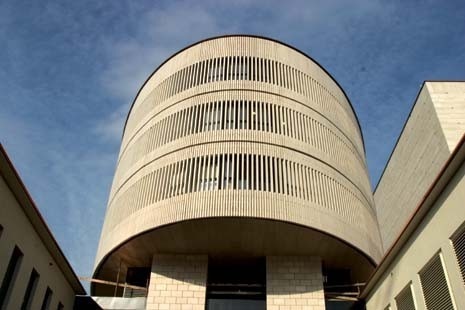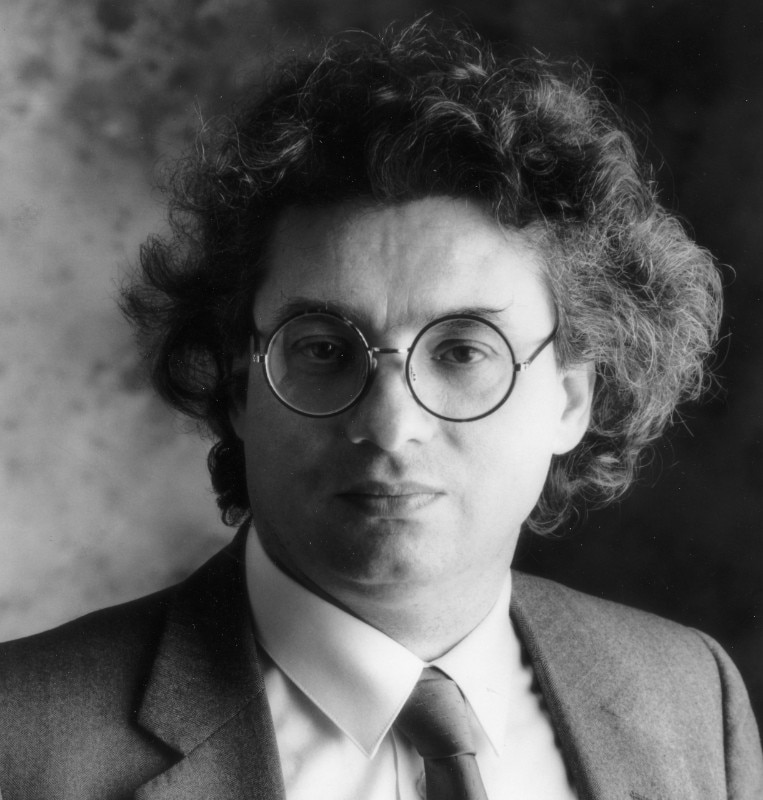Mario Botta was born in 1943 in Mendrisio. After working as an apprentice draughtsman for the Lugano-based architect Tita Carloni, he moved first to Milan (the city in which he graduated from Art High School) and then to Venice, where he enrolled at the department of Architecture at the IUAV.
He completed his degree in 1969 with a thesis tutored by Carlo Scarpa – after having met Le Corbusier and Louis Kahn, who were later to be sources of inspiration – and returned to Switzerland to open his own professional firm, which at the time dealt mainly with detached family private homes. These included the villas in Riva San Vitale (1971-1973), Ligornetto (1975-1976) and Morbio Superiore (1982-1983), in which Botta treated the theme of the home as a refuge, which protects and reassures its inhabitants. These were buildings with a character that was ironic and, in a certain sense, monumental, obtained for example (in the case of Morbio) through rigorous symmetrical compositions and a particular use of raw concrete blocks set in a linear pattern and alternated with strips of silvered brick which, on the contrary, were set at 45 degrees.
Partially dug into the hillside, the villa was also characterised by a theme which was particularly dear to Botta and which had already been explored in Riva San Vitale; the net distinction between solids and voids, the latter appearing to have been dug out of the building.
Between 1980 and 1990, Botta associated with artists and intellectuals from all walks of life and took numerous long trips abroad. Together with Gabriele Basilico and Edoardo Sanguinetti, he published “La Casa Rotonda”, and he became friends with Max Huber, Nicki de Saint Phalle, Dante Isella, Harld Szeemann, Robert Frank and Alberto Flammer.
In 1986, the MoMA in New York dedicated a solo exhibition to his work, and the Swiss architect received his first contracts for public buildings and from abroad, debuting with the Cultural Centre in Chambéry (1984-1987). These works were joined by other such as the Maison du Livre de l’Image et du Son in Villeurbanne (1984-1988), the church of San Giovanni Battista in Mogno (1986-1996), the Watari-um art gallery in Tokyo (1985-1990) and the San Francisco MoMA (1989-1995).
In Japan, on a challenging triangular lot of only one hundred and sixty square metres, a space which remained from the opening of a new highway, Botta built a small building which, with its clarity and strength of image, attempted to stand out in the midst of the chaos that surrounded it, thanks to a thick masonry curtain raised on the main façade, in which slabs of grey marble are crossed with horizontal fissures which erode the angles and cancel the perception of the number of floors which make up the museum.

The church of Mongo, on the other hand, was the first step in a long series of places of worship, including designs for the churches of Pordenone (1987-1992) and Sartiana (1987-1995), for the cathedral of Evry (1988-1995), for the basilica of Santa Maria degli Angeli on Mont Tamaro (1990-1996, for the Giovanni XXII church in Seriate (1994-2000) and for the Cymbalista synagogue in Tel Aviv (1996-1998). In each of these, light plays a predominant role as a prime generator of space and a measure for the definition of time that passes with the various phases of the day, the months and the seasons. Light is, however, the main symbolic element, representing through its variations the uneasiness of humankind in the face of divine perfection.
In San Giovanni Battista, the light floods in from above through the great circular glass roof, reverberating within the interior, which appears almost suspended, and lightening the features dominated by the alternation of grey stone and white marble stripes. In Tel Aviv, the surfaces in golden stone accentuate the effect created by the combination of independent volumes connected by large flat surfaces which are hidden and completely transparent; in Seriate, the primary source of light is provided by four high-set triangular skylights, the nappe leaning towards the church’s centre of mass, generating a stereometric volumetry.
In the years that followed, Botta completed two important museums which brought him international acclaim: the previously-mentioned MoMA in San Francisco, and the MART in Rovereto (1988-2002). In the first case, the striking move was to create, in a landscape dominated by the vertical lines of endless skyscrapers, a kind of fortress which was rooted to the ground and developed horizontally, with a clear plan which allowed the spacial organisation of the building to be immediately recognised.
Botta defined the Californian MoMA as a building “without style”. Bricks and stone, ancient materials, were used to lend form to that which was created to be a permanent presence, detached from the linguistic trends of the moment and imagined as a fixed presence in a constantly-changing urban context. This is also why the museum is completely isolated – as was the case with the gallery in Tokyo – by a thick barrier which impedes the view from outside, but which presents the city with a façade that, due to its very formal autonomy, has become an icon. On the contrary, the conditions in which Botta found himself working in Trentino led him to seek a profound relationship with the setting. The presence of the period Annoni and Alberti buildings was exploited to create a new urban layout which, from Corso Bettini, led into the historical part of the city culminating in a modern agora, protected by a glass and iron roof which became the matrix and representation of the entire complex.
In this same period, the scheduling for the construction of a new School of Architecture, the Mendrisio Academy, took place. Inaugurated in 1996, it offered an alternative approach to teaching in contrast to the Swiss University system, in which an important role is played by humanistic subjects and by a copious group of well-known international professors: from Rykwert to Benevolo, Burkhart, Campos Baeza, Dal Co, Frampton, Mendes da Rocha and Zumthor.
Recently, Botta’s activity – as with many other archistars – has moved towards the Far East, thanks to projects such as the Leeum – an art museum sponsored by Samsung which was completed in Seoul in 2004 – the hotel Twelve in Shanghai (2006-2012) and the two headquarters for Tata in India (1996-2003). With the completion of the Mendrisio Academy campus, construction began for the “Theatre of Architecture”, which opened in 2018.
Along with his activity as an architect, Botta also works – less intensely – as a designer, for example designing the Quarta chair (1984) and the Terzo table (1983). The Swiss architect is also credited with the setting up of the BSI Architectural Award, financed by the BSI Bank of Lugano, which is presented to designers under the age of fifty.
In the words of Pierluigi Panza:
A prime example of those architects with a love of construction and matter, Botta sees in these aspects a reflection of culture seen as the cultivation of things and transforms them into buildings which reflect the culture of design. It is a culture which focuses on ties with history and the idea of the territory as a place for the sedimentation of memories
- Born:
- 1943 – alive
- Profession:
- architect, designer


